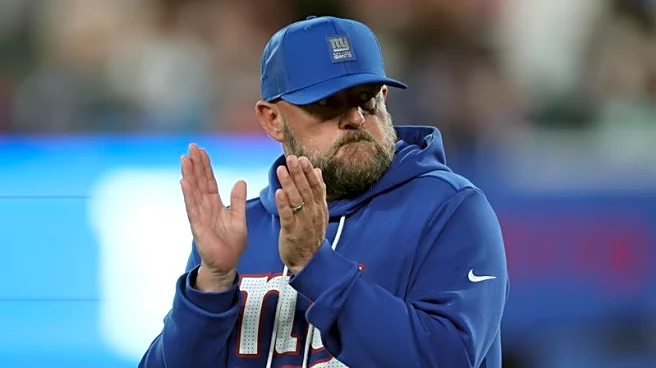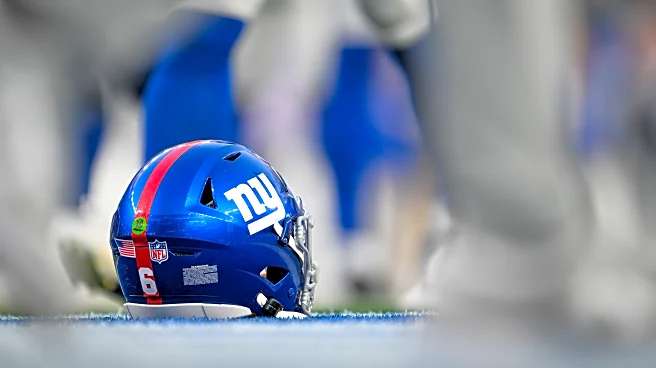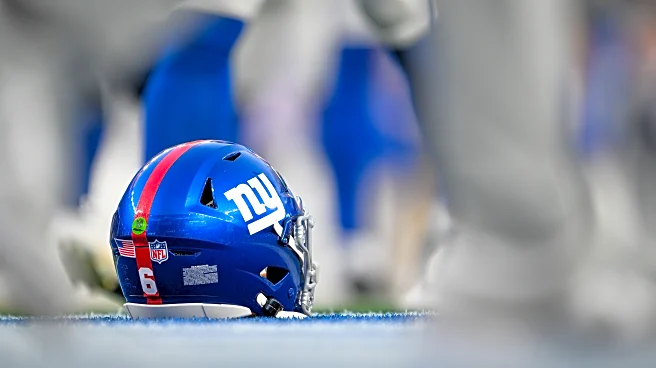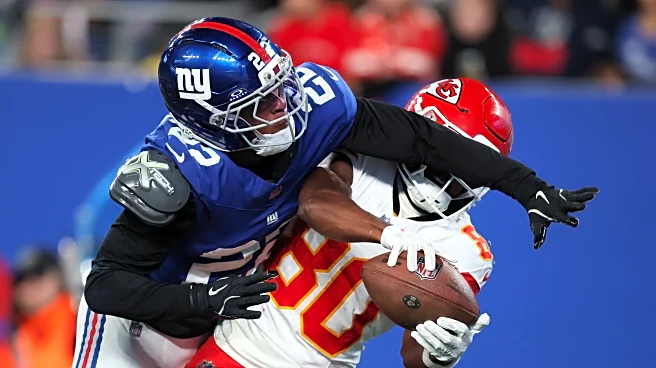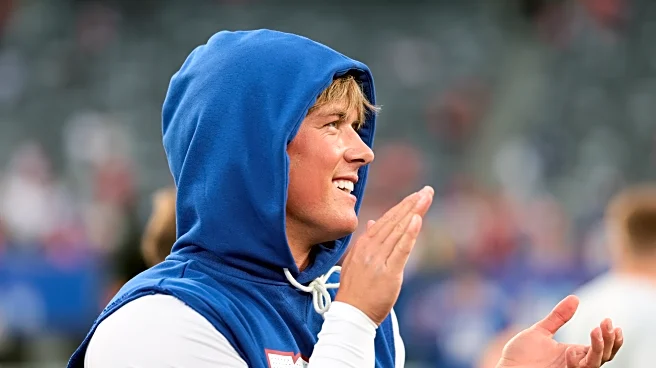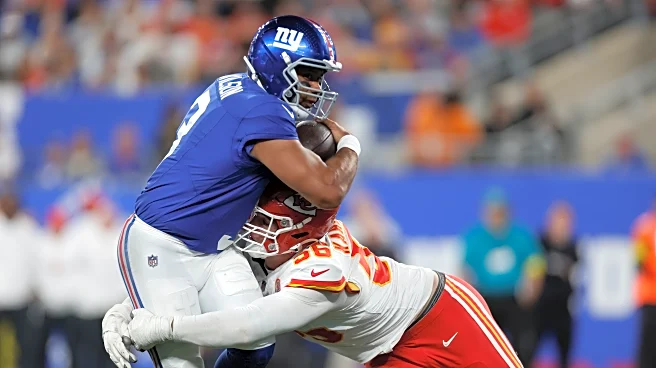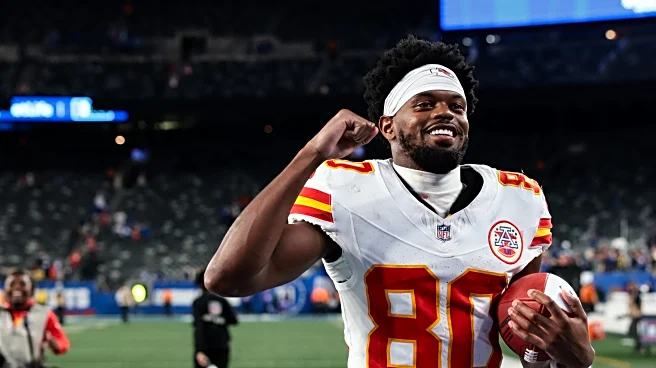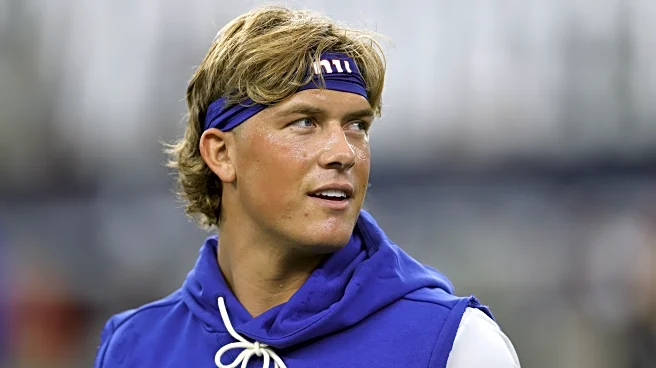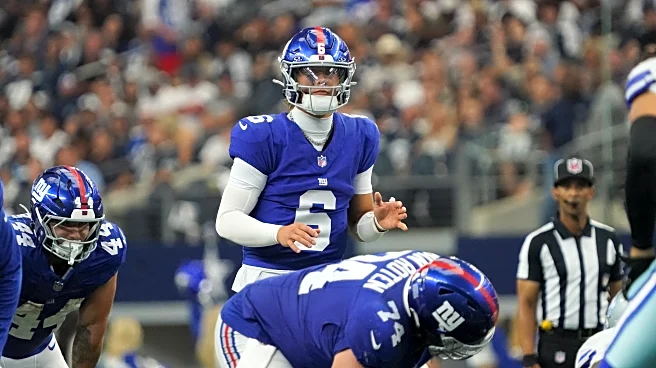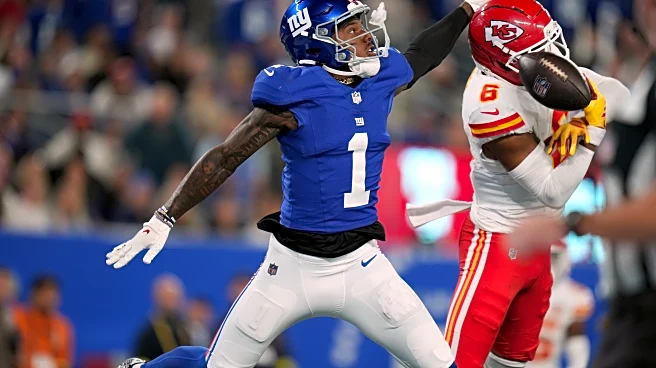Ready or not, here he comes.
The New York Giants have thrown us all a curveball and named rookie quarterback Jaxson Dart their starting quarterback for the forseeable future. That means it will be Dart,
not Russell Wilson, leading the Giants out of the tunnel when they face the 3-0 Los Angeles Chargers.
And in the span of a day the Giants have gone from having one of the oldest starting quarterbacks in the NFL to the youngest. Going from an experienced veteran to an athletic rookie is bound to have an impact on the Giants’ offense.
But just how much of an impact will the change from Wilson to Dart have on the product on the field? It also happens that the Giants are playing one of the best defenses in the NFL when they take the field against the Chargers on Sunday afternoon.
What will the Jaxson Dart offense look like?
This is the question heading into the Giants’ game against the Chargers.
We can be pretty sure that the offense won’t be fundamentally different from what we saw with Wilson at quarterback. While Brian Daboll tailors his offenses to the specific skill sets and preferences of his quarterbacks, there are definite similarities between Wilson, Dart, and Jameis Winston. Each are strong-armed quarterbacks who are aggressive in attacking downfield.
We know from the bit of the “Jaxson Dart Package” that we saw against the Dallas Cowboys and Kansas City Chiefs that the read-option will have a place in the Giants offense from now on.
We should also anticipate a relatively high rate of RPO plays for Dart. He executed them well in the preseason, and they were frequently used in Ole Miss’ offense. It will be interesting to see if the Giants use more schemed separation and rub routes, allowing Dart to throw with feel and anticipation as opposed to precise timing. And while the Giants want to be more of a pass-first offense they’ll also likely lean into the running game some with Cam Skattebo. Skattebo had a strong game against the Chiefs, and he could do so again if the the Chargers devote significant resources to taking away Malik Nabers.
Perhaps the biggest question will be how the Giants approach pushing the ball down the field. Dart is an aggressive quarterback and the Giants want to allow him to be aggressive. That said, there’s a time and a place for everything, and the Chargers have a very good secondary. While the Giants have used RPOs and West Coast quick game concepts as the foundation of their passing offense, we’ve seen that they want to use the vertical passing game to open up their underneath offense and pull defenders out of the box for the running game.
Wilson threw deep at the second-highest rate in the NFL behind Lamar Jackson, with (just under) 1 in 5 pass attempts traveling more than 20 yards downfield. Dart may not throw deep at that high a rate, but he did have the sixth-highest average depth of target in college football last year (per PFF). The long-ball will certainly remain in the Giants’ arsenal with Dart.
How the Giants do that (if they’re able to do so at all) against two of the best defensive backs in the NFL in Derwin James and Donte Jackson will be one of the more fascinating sub-plots of the game.
Getting in the zone
The Chargers run zone coverage at a very high rate, calling zone coverages 70.1% of the time. That’s good for fourth-highest in the NFL and only slightly behind the Dallas Cowboys at 76.6%.
That might raise some eyebrows, considering the Giants ate the Cowboys’ secondary alive. However, while the Cowboys are legitimately horrible at covering opposing receivers (league-worst 0.303 EPA per drop back), the Chargers are among the best in zone coverage with a -0.191 EPA per drop back (3rd).
They primarily run middle of field open coverages, primarily Cover 2 with some Cover 1 and Cover 3 mixed in. That mix presents an opportunity, but also a potential trap for a rookie quarterback. The Chargers are among the worst teams in the NFL at running Cover 1, with an EPA per drop back of 0.617 (second-worst). Meanwhile, they have an EPA per dropback in Cover 3 of -0.409, which is the third-best in the NFL.
Malik Nabers and Wan’Dale Robinson are not only skilled route runners, but they’re also incredibly twitchy athletes. We know that they’re natural separators who can quickly open against man coverage. That and the threat of the zone-read from Jaxson Dart could make man coverage very risky against the Giants — particularly given how poor the Chargers are at running it. That said, we can almost expect the Chargers to try and bait the rookie into a mistake, showing Cover 1, but rotating to Cover 2 or Cover 3 at or after the snap. Dart impressed with his football IQ in the pre-season, however there’s a difference between playing against relatively vanilla defenses manned by reserve players in the pre-season.
We can pretty much assume that the Chargers will have Nabers bracketed as often as possible. It would be a stunning development if the Chargers watched the Giants’ offense against the Chiefs and didn’t scheme to take away Nabers. Even dating back to training camp, the Giants’ offense has struggled to consistently move the ball if they can’t get their star receiver involved. The Giants will need to come up with answers to provide weapons for Dart even if the Chargers try to take Nabers away — whether that’s by scheming separation for Nabers, creating traffic using bunch sets, or using the attention paid to Nabers to create opportunities elsewhere. The Giants absolutely need to find answers on the outside besides Nabers, whether that’s Darius Slayton, Jalin Hyatt, or splitting Theo Johnson out wide.
The Chargers consistently drop seven into coverage, so finding open areas of the field will be one of the challenges of the game.
Protecting Dart
The Giants got Andrew Thomas back in Week 3, though the star left tackle only played the first 28 snaps before his night was over. The Giants have been remarkably patient in how they’ve brought Thomas along, to the point of putting him on a snap-count for a “must win” game against the Kansas City Chiefs.
Thomas played very well in his first action back, as both he and RT Jermaine Eluemunor posted 100% Pass Block Win Rates. The Giants were able to move the ball on the ground and their pass protection was solid with Thomas in the game. The hope is that Thomas will be able to play the full game, and play to his usual standards throughout.
The interior of the offensive is more of a concern. John Michael Schmitz and Jon Runyan Jr. played well together with Thomas in the game, however pressure started to leak through the A and B-gaps once rookie Marcus Mbow was inserted. That makes sense, as Mbow is agile but still needs to build strength to deal with power rushers like George Karlaftis. Like the Chiefs, the Chargers have powerful edge defenders as opposed to athletic ones, so that could be worth monitoring if Thomas is once again on a snap count.
The good news is that the Chargers don’t blitz often. They typically play out of a nickel set, though their 49.1 percent of snaps in the nickel is seventh-lowest in the NFL. The Chargers call a very high rate of dime sets (24.6 percent, third-most) as well as run “other” sets at 21.1% of the time — by far the highest in the NFL, with the next highest rate being 6.7% of plays. To put that in perspective, they’ve called the league’s lowest rate of base defense, running base on just 5.3% of their defensive snaps.
In addition to not blitzing often, they don’t run many stunts along their defensive front. The Chargers run stunts at the fourth-lowest rate in the NFL at 7.9% of rush snaps — just higher than the Giants’ own second-lowest rate of 7.4%. The Chargers also lost veteran pass rusher Khalil Mack to a dislocated elbow a week ago, and linebacker Daiyan Henley is probably their most dangerous pass rusher. He leads the team with two sacks, two QB hits, and an interception.
Their defensive front isn’t particularly athletic, but they’re stout and well coached. They’re based in a 3-man front, but frequently play with just two or even one down linemen. They also play with spacing, using wide or tight spacing — as well as TITE looks — to create opportunities to stress offensive lines in the run and pass game. Interestingly, while the Chargers have a higher team pass rush win rate than the Giants, they have fewer sacks. Their defensive front is skilled and well-coached, but they don’t put quite as much stress on opposing offensive lines as do the Giants’ stable of hyper-athletic pass rushers.
That doesn’t mean that protecting Dart will be a breeze. He’ll still need to be crisp within the pocket, and the Chargers are good at harrying, hurrying, and hitting quarterbacks — they exert a lot of pressure, even if they don’t quite get the sack. Dart’s quickness and twitchy agility within the pocket stood out in pre-season, but it wouldn’t be a surprise to see him playing from a constricted pocket this game.
Final thoughts
This is the second time in a month that we’ve looked ahead at the Giants’ offense with a new quarterback. But while we (and more importantly, the other 31 teams) hadn’t seen Wilson in the offense that Daboll and Kafka built for him, everyone had 200 games of tape to lean on. Wilson’s preferences, tendencies, strengths, and weaknesses are well known at this point.
There’s no such trove of intel on Dart.
We can only guess based on what Dart did in college, the general shape of the Giants’ offense (or what they want the offense to be) through three games, and the glimpses of the “Dart Package” we saw the last two weeks.
That’s an advantage for the Giants, but not much of one, considering Dart has never actually quarterbacked against an NFL defense in a regular season game. He’s never really experienced the speed and sophistication of the pro game. Perhaps he’ll acquit himself as well as he did in the preseason, once again answering the bell and rewarding the Giants’ faith in him. Or perhaps he’ll look like a rookie who is still adapting to the Pro game.
We won’t know for sure until Sunday, but the intrigue is certainly fascinating.

